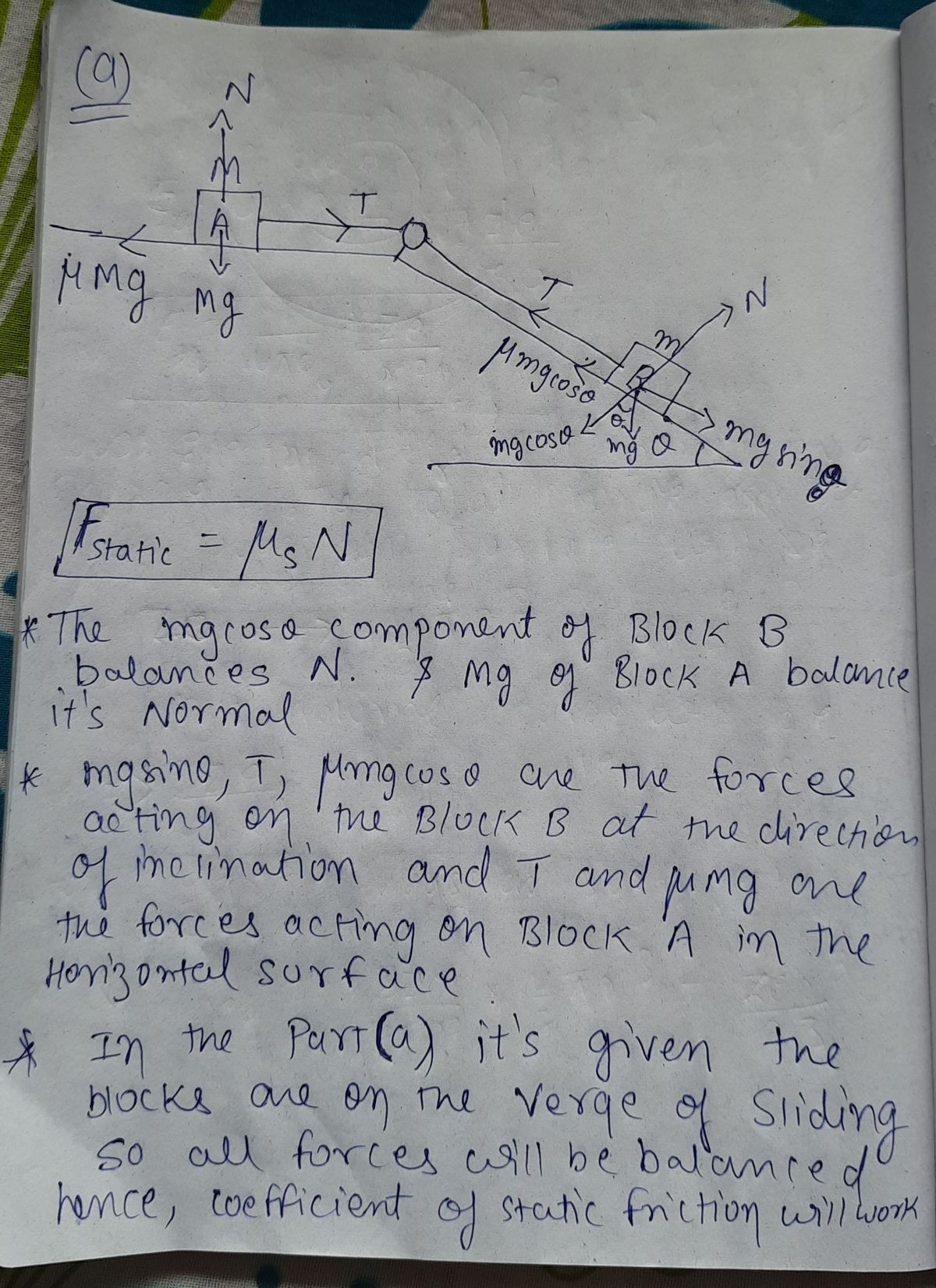(ex) Two masses, pulley, incline with friction, static vs. kinetic friction: The two blocks shown below are connected by a light string over a massless frictionless pulley. The coefficient of static friction between each block and surface is 0.35, and the coefficient of kinetic friction is 0.20. The mass of block A is 10.0 kg, and the mass of block B is unknown. The angle of the incline is 30 degrees. Do everything in symbols first substitute numbers in only at the end. (See PSL 5.5,7,8,9) a) The blocks are released from rest, and they are on the verge of sliding, but they do not move. Draw FBDs for each block. b) In symbols, solve for the mass of block B. (What else could you solve for?) c) Substitute the numbers to determine the mass of block B. A Ө B
(ex) Two masses, pulley, incline with friction, static vs. kinetic friction: The two blocks shown below are connected by a light string over a massless frictionless pulley. The coefficient of static friction between each block and surface is 0.35, and the coefficient of kinetic friction is 0.20. The mass of block A is 10.0 kg, and the mass of block B is unknown. The angle of the incline is 30 degrees. Do everything in symbols first substitute numbers in only at the end. (See PSL 5.5,7,8,9) a) The blocks are released from rest, and they are on the verge of sliding, but they do not move. Draw FBDs for each block. b) In symbols, solve for the mass of block B. (What else could you solve for?) c) Substitute the numbers to determine the mass of block B. A Ө B
Related questions
Question

Transcribed Image Text:**Two masses, pulley, incline with friction, static vs. kinetic friction:** The two blocks shown below are connected by a light string over a massless frictionless pulley. The coefficient of static friction between each block and surface is 0.35, and the coefficient of kinetic friction is 0.20. The mass of block A is 10.0 kg, and the mass of block B is unknown. The angle of the incline is 30 degrees. Do everything in symbols first—substitute numbers in only at the end. (See PSL 5.5,7,8,9)
a) The blocks are released from rest, and they are on the verge of sliding, but they do not move. Draw FBDs for each block.
b) In symbols, solve for the mass of block B. (What else could you solve for?)
c) Substitute the numbers to determine the mass of block B.
**Diagram Explanation:**
- The diagram shows two blocks, A and B, connected by a string over a pulley.
- Block A is on a horizontal surface, and Block B is on a 30-degree inclined plane.
Expert Solution
Step 1

Trending now
This is a popular solution!
Step by step
Solved in 2 steps with 2 images

Follow-up Questions
Read through expert solutions to related follow-up questions below.
Follow-up Question

Transcribed Image Text:Someone gives a sharp but momentary shove to the blocks, and they begin to slide. Now block A is
sliding to the right, and block B is sliding down the incline.
d) Draw new free-body diagrams. They are similar to before, but consider which forces now change
in type, magnitude, and/or direction.
e) Describe any changes in any of the forces.
f) Determine the acceleration of the system (symbols).
g) Substitute in numbers to determine the acceleration.
Solution